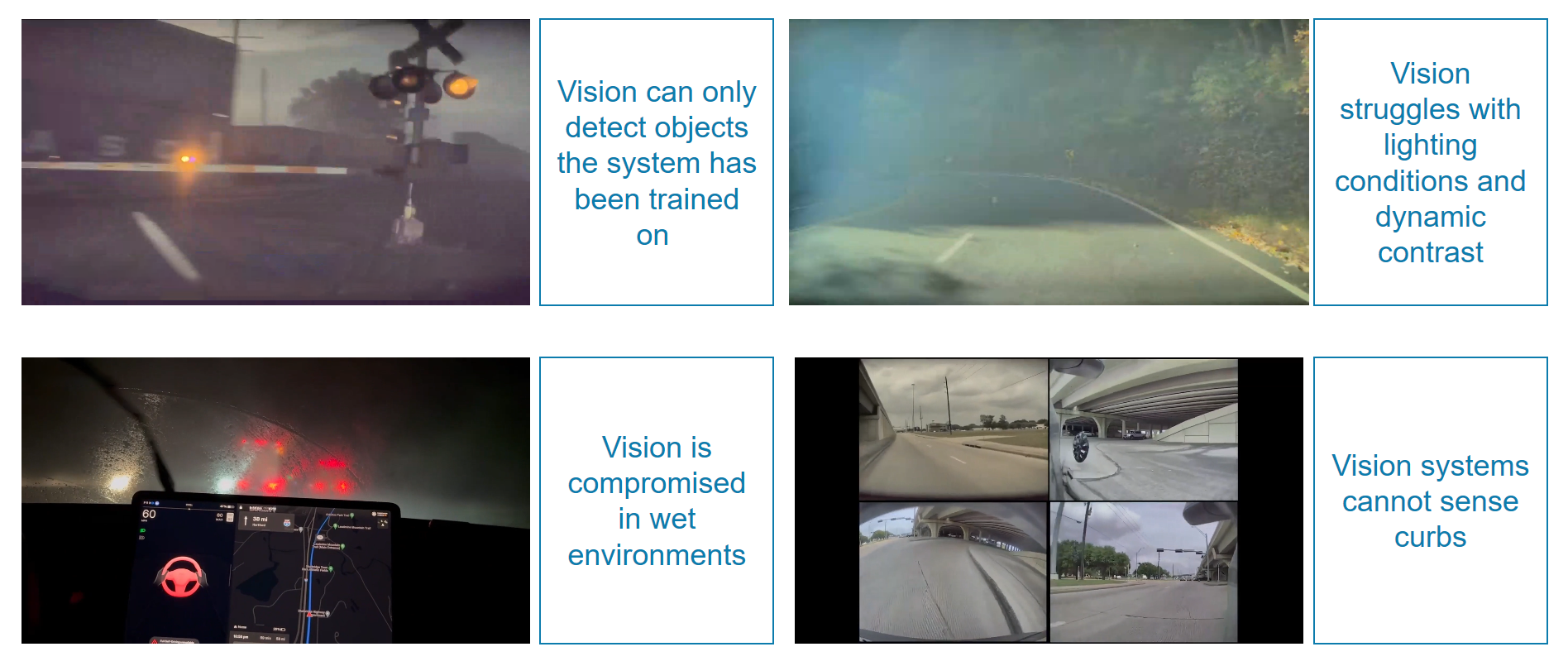Across the globe, regulators are accelerating efforts to make roads safer through the widespread adoption of Automatic Emergency Braking (AEB). In the United States, the National Highway Traffic Safety Administration (NHTSA) implemented a sweeping regulation that requires all new light vehicles to include advanced AEB capabilities by 2029. These systems must operate effectively at highway speeds and in a range of real-world conditions—including low light and pedestrian scenarios.
The U.S. isn’t alone. In the European Union, AEB is now mandatory for new vehicle registrations under the General Safety Regulation (GSR), and China has announced that AEB will be required for all new cars starting in 2028. While the technical thresholds vary, the global direction is clear: AEB is no longer a premium feature—it’s a baseline expectation.
This shift marks a significant challenge for the industry. Delivering consistent, reliable AEB performance at higher speeds demands more than incremental improvements to today’s systems. It calls for a rethinking of the perception stack, sensor fusion strategies, and real-time decision-making—especially in scenarios where milliseconds can mean the difference between a near miss and a serious collision.
High-Speed AEB: Where Performance Meets Complexity
Low-speed AEB systems are well understood and increasingly common. They’re effective in urban environments and stop-and-go traffic, where reaction times and stopping distances are more forgiving. But at highway speeds the margin for error narrows, as illustrated by the following…
- Braking distance is proportional to the speed^2: A vehicle traveling at 120 km/h (~75 mph) requires significantly more distance to stop in time.
- Detection time shrinks: At highway speeds, the time between initial object detection and the need to apply brakes is measured in milliseconds.
- Sensor coverage becomes more demanding: Vehicles must detect objects farther away with greater precision, to anticipate threats early enough for safe braking.
- Environmental complexity increases: Night driving, inclement weather, and occluded objects introduce additional ambiguity that perception systems must resolve.
Indeed, perception is at the very heart of this challenge. To perform reliably at high speeds, a vehicle’s AEB system must detect not only large vehicles, but also smaller, less reflective, or fast-moving objects—such as a child running across the road or a fallen motorcycle—often in low-light or degraded conditions.
The Limits of Conventional Sensor Stacks

Most currently available sensor stacks struggle to meet the demands of high-speed AEB. Cameras, while effective for object classification, are limited by the lack of direct distance and relative speed—especially at night or in adverse weather. Lidar can extend perception farther, but it remains costly and typically the effective functional range maxes out at around 80–100 meters. Traditional 3D radar offers only basic azimuth and range data, and often lacks the angular resolution or detection range needed to detect small objects with confidence.
These limitations are magnified at high speeds, where vehicles must interpret threats quickly and accurately. A child stepping onto the road, a motorcycle veering across lanes, or even a stationary box in the middle of the road all require sensors that can detect, classify, and track objects in real-time.
Pushing AEB into these scenarios reveals the shortcomings of legacy systems—and the need for a more advanced approach to perception.
Why Ambarella’s Oculii™ 4D AI Imaging Radar is Different
High-speed AEB demands precise, long-range perception across a wide range of conditions. Conventional radar often falls short—struggling with resolution, object tracking, and false positives. Oculii™ 4D imaging radar takes a fundamentally different approach, combining adaptive AI waveform processing with hardware efficiency to deliver high-resolution performance without the cost and complexity of massive antenna arrays.

In third-party tests conducted by a global automotive OEM, Ambarella’s radar system detected small, low-profile objects—down to the size of a water bottle—at distances beyond 100 meters, including at night. These evaluations included more than ten object types, from a pedestrian dummy and a motorcycle, to a small stuffed puppy, a traffic cone, and a cardboard box. Crucially, our system not only located these objects, but accurately assessed their speed and trajectory—enabling smarter, more selective AEB activation when warranted.
Critically, we also outperformed other 3D and 4D radar systems that were tested in suppressing false positives. Ghosting and noise are persistent issues in traditional radar systems that, unlike our Oculii technology, don’t employ AI algorithms to adapt radar waveforms to the environment. As a result, when those competing radar systems falsely trigger AEB at high speed, the result can be just as dangerous as a missed detection (think multi-car pileups). With our Oculii radar technology, we reduce these risks through a combination of high angular resolution, enhanced vertical separation, and AI-powered waveform adaptation.
Our Oculii technology’s AEB performance was validated by the OEM at speeds up to 120 km/h, in both daylight and low-light conditions, on closed-course roads. To our knowledge, no other radar-based AEB system has demonstrated this level of precision and reliability in comparable high-speed tests using radar alone.
A Centralized, Scalable Approach
Our Oculii radar technology is not just high-performing—it’s also built for cost-effective scalability. Paired with Ambarella’s CV3-AD family of AI domain controller SoCs for centralized radar processing, we can leverage that together with our lightweight, AI-based Oculii software—which can use radar heads with only 6 transmit and 8 receive antennas—to enable a centralized radar architecture that delivers high-resolution perception while minimizing hardware overhead. This approach allows us to reduce data bandwidth, simplify integration with other sensors, and reduce overall system complexity (competing 4D radar systems require multiple-fold additional antennas, generating a lot more data and power).
That matters for OEMs building cost-sensitive platforms. High-speed AEB shouldn’t be reserved for premium vehicles. With the right architecture, advanced perception can scale across an OEM’s entire range of makes and models.
The Road Ahead
At Ambarella, our goal is to push the boundaries of what’s possible in vehicle safety, and to do so in a way that’s accessible, scalable, and regulation-ready.
With our Oculii radar technology, we’ve shown that it’s possible to deliver high-speed AEB using radar—without sacrificing performance. We believe this technology will be essential in helping OEMs meet the challenges of the coming decade, while protecting the lives of drivers, passengers, and pedestrians alike.
We invite additional OEMs to conduct their own AEB tests using Ambarella’s radar technology. Safety starts with better perception—and we’re ready to help you bring that to the world’s highways.
